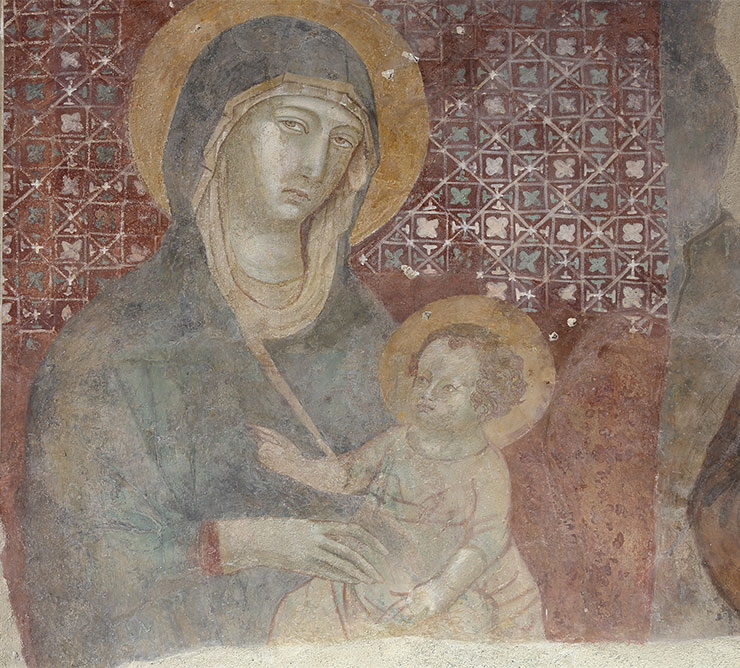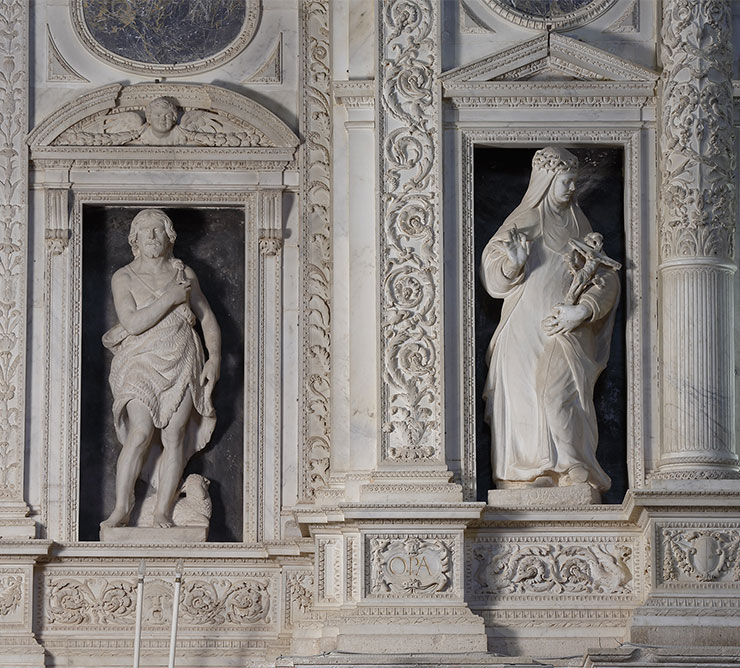Montepulciano has rightly been called the pearl of the 16th century, because palaces, churches and decorations reflect the mature Renaissance and succeed one another in a sort of open-air museum. The artist who most influenced the architecture of Pistoia was undoubtedly Antonio da Sangallo known as The Elder, who built the Temple of St. Blaise in 1518 on the site of an ancient parish church. The building was even promoted by Pope Leo X, son of Lorenzo the Magnificent, who had already been educated in classical literature by Angelo Poliziano, the great humanist poet born in this city.
The timetables indicated correspond to Museum's opening hours. The ticket is valid for the whole day.
The church's origin is connected to a miraculous event that took place on the 23rd of April 1518 when two maidens, Antilia and Camilla, and a peasant named Toto, passing in front of the fresco depicting the Virgin Mary with Child and St. Francis, saw that the V... more
The church's origin is connected to a miraculous event that took place on the 23rd of April 1518 when two maidens, Antilia and Camilla, and a peasant named Toto, passing in front of the fresco depicting the Virgin Mary with Child and St. Francis, saw that the Virgin's eyes moved as if she were alive. From that moment on, Toto, whose statue remains in the sacristy, committed his whole life to seeking alms to build the church. This has a greek cross layout with a central dome and semicircular apse, while on the opposite side of the cross, which must be considered the main one, there are two bell towers, of which only the one on the left is completed. Both outside and inside, the temple is entirely clad in travertine slabs that show an amber colouring. The interior of the church repeats the same impression of architectural solemnity that one receives on the outside, although the altars are simple and devoid of furnishings. The only wall with numerous decorative elements is the one corresponding to the Altar Major. In front of the church is the harmonious rectory building with a double loggia, also designed by Sangallo and erected around 1550. The well in front of the Rectory, on the other hand, was built between 1550 and 1551 and originally had two columns with travertine architraves.
lessTEMPLE OF ST. BLAISE:
From 1st April to 30th September
daily from 10 a.m. to 1.30 p.m. and 2 p.m. to 6.30 p.m.
From 1st October to 31st October and from 15th March to 31st March
daily from 10 a.m. to 1.30 p.m. and 2 p.m. to 6 p.m.
From 1st November to 14th March
Saturdays and Sundays from 10.30 a.m. to 1.30 p.m. and 2 p.m. to 5 p.m.
(from 26 December to 8 January daily open)
Sundays and public holidays entrance at 11:30 a.m.
CANONICAL OFFICINA:
Saturdays and Sundays from 10:30 a.m. to 1:30 p.m. and 2 p.m. to 5 p.m.
(last entry 30 minutes before closing time)
By car:
From the North: drive along the A1 Motorway (Autostrada del Sole) and exit at Valdichiana / Bettolle. Drive through the town of Bettolle and follow the indications for Torrita di Siena. Once in Torrita, turn left at the traffic lights towards Montepulciano.
From the South: drive along the A1 Motorway (Autostrada del Sole) and exit at Chiusi / Chianciano Terme. Follow the indications for Chianciano Terme, pass through the town of Chianciano and continue in the direction of Montepulciano.
From Siena: drive along the Siena / Bettole road in direction of Bettole and exit at Sinalunga. Then follow the indications for Torrita di Siena. Once in Torrita, follow indications for Montepulciano.
By train:
The nearest railway Station is Chiusi and is half an hour from Montepulciano. Trains to and from Florence and Rome depart from Chiusi.
By bus:
Buses, departing from Pietro Nenni Square, connect Montepulciano with many other Tuscan towns: Siena (4 trips per day except Sundays), Pienza (8 trips per day) and Chiusi (trips every hour).

The fresco depicting the Virgin and Child with St. Francis, now located on the church's high altar, is attributed to the Master of Badia a Isola, a Sienese artist active in the late 13th and early 14th century. On St. George's Day, which was the 23rd of April 1518, the first miraculous event related to this sacred Marian image took place: two maidens, Antilia and Camilla, with a shepherd named Toto, saw this Virgin Mary open and close her eyes as if she were alive. This miracle was followed by others: the blind regained their sight, the deaf regained their hearing, the possessed were freed from the devil. Thus, on 28th April 1518, it was decided to start building the church.

The unique wall with many decorative elements inside the church is the one corresponding to the high altar with the large marble dossal completed in 1584, into which is inserted the fresco depicting the Virgin Mary with Child and St. Francis, the only surviving element from the previous church. In niches to the left and right of the miraculous image, are statues of saints sculpted in Carrara marble. he sculptures depict St. John the Baptist, the city' patron saint recognisable by his camel-skin robe and the lamb at his feet, St. Catherine of Siena, showing the fleur de lis and the Crucifix, St. Agnes Segni and St. George defeating the dragon, symbol of evil.